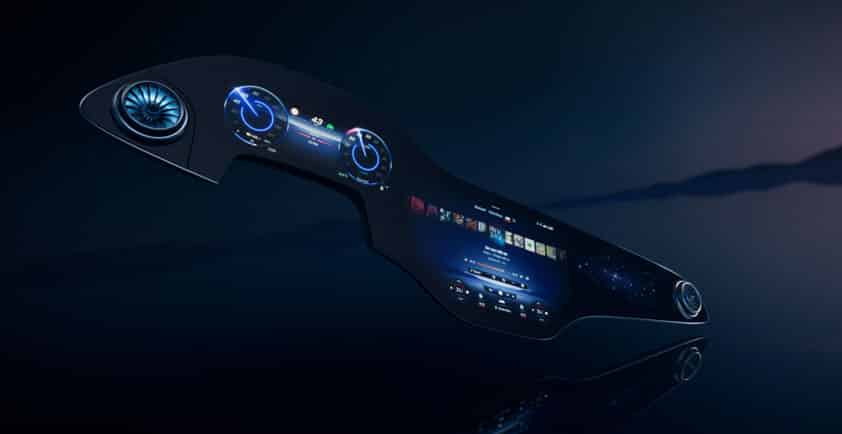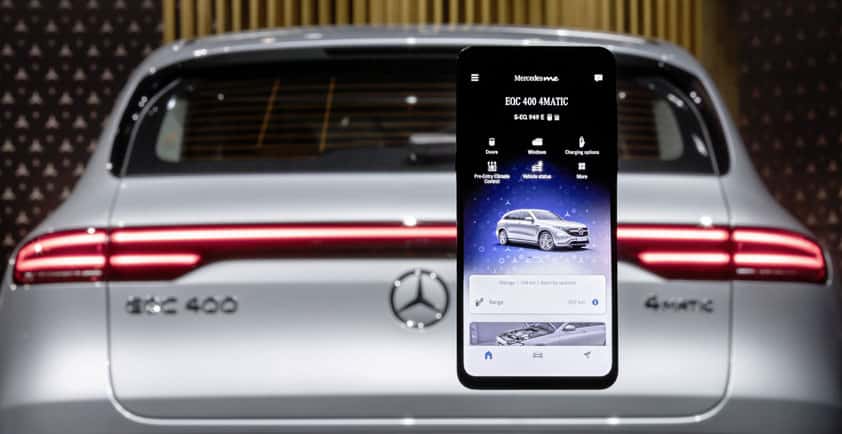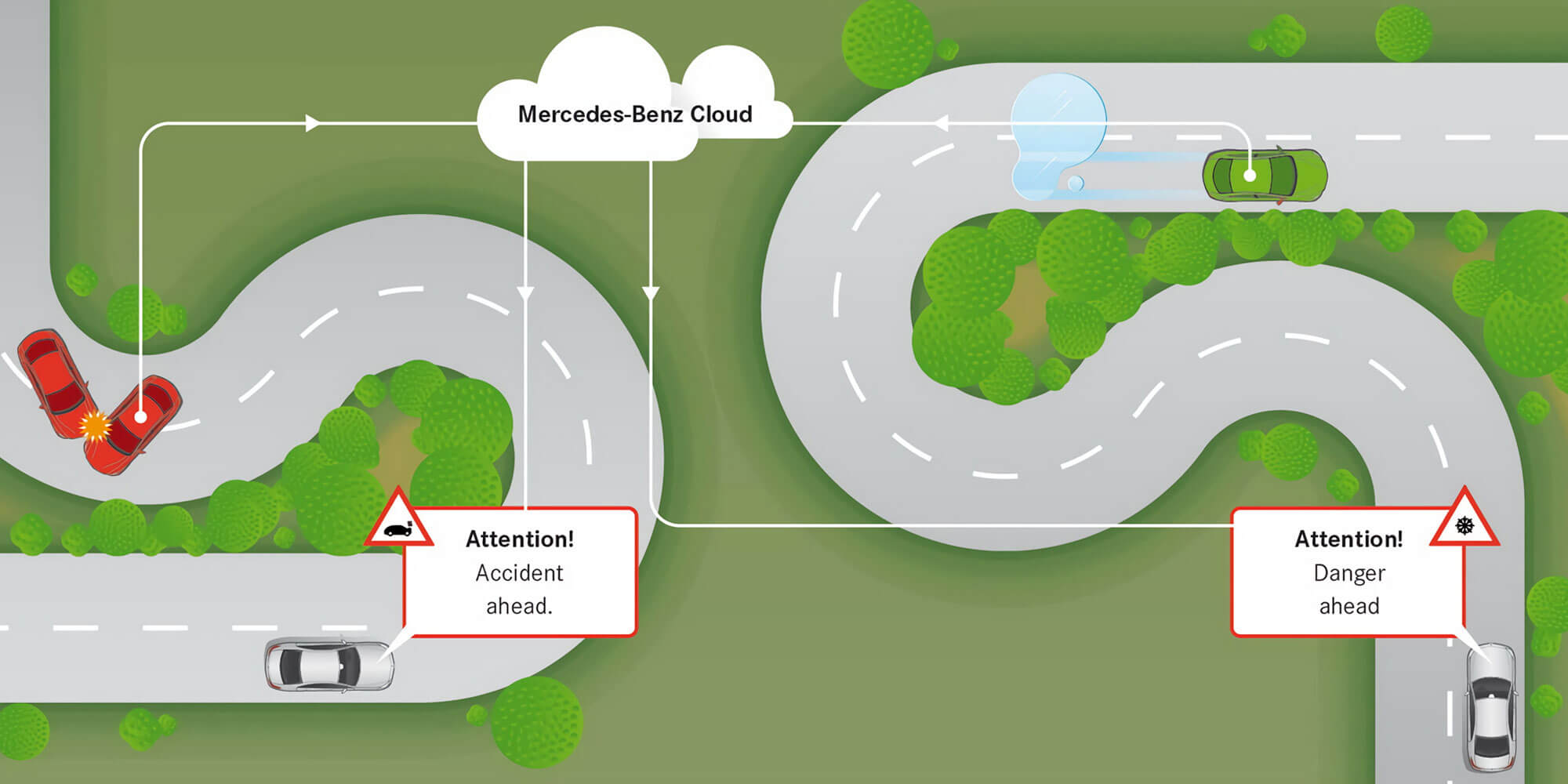
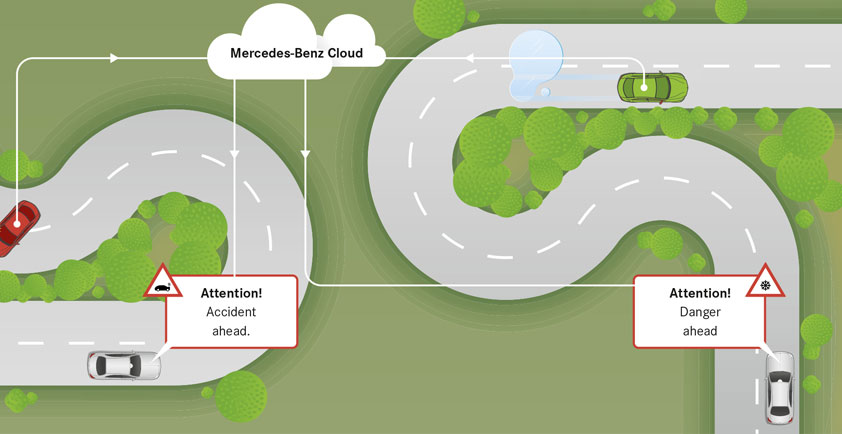
MORE TRAFFIC SAFETY WITH CAR-TO-X COMMUNICATION: DAIMLER IS STARTING A EUROPE-WIDE COOPERATION PROJECT
Stuttgart/Eindhoven. Working together for more safety in road traffic: In cooperation with HERE Technologies, Tom Tom and the transport authorities in six European countries, Daimler, BMW, Ford and Volvo are testing how information about acutely hazardous situations can be passed on using Car-to-X technology. Today the project partners signed a memorandum of understanding (MoU) in Eindhoven, Netherlands. The test phase is scheduled to last twelve months, starting in the Netherlands.
How can information about a sudden hazard – e.g. slippery conditions or an accident – be passed on to following or approaching traffic as quickly as possible? Daimler has already used mobile networking technologies as standard to send hazard warnings from vehicle to vehicle (Car-to-Car) since 2013. For the first time, leading OEMs and navigation services are now working on a joint, non manufacturer specific and EU-wide solution. The transport ministries in Germany, Spain, Finland, Luxembourg, the Netherlands and Sweden are supporting the project. The aim of the pilot project started today is to conduct research into the technical, economic and legal aspects of Car-to-X. Car-to-X is the term used to describe communication between vehicles and with the transport infrastructure.
Sajjad Khan, Executive Vice President, Member of Divisional Board, Mercedes-Benz, CASE: "Car-to-X communication has the potential to significantly improve safety on the roads. With this project we are raising previous approaches to a new level: For the first time we have numerous highly capable and effective partners on board, so that warning messages can reach a large number of road users practically in real time. This can save lives. Daimler already laid the foundations for this development years ago: Already today, Mercedes-Benz vehicles are equipped with the technology needed for the wide-based and secure exchange of safety-related traffic information."
In line with EU goals
The focus of the project is on the "Safety Related Traffic Information" (SRTI) discussion at EU level. With this initiative, the project partners are supporting the EU Commission in its efforts to promote the development of networked and intelligent transport systems. The long-term objective of the EU is to substantially reduce the number of fatalities and severe injuries in road traffic by 2050. An improved flow of information could make a decisive contribution to this.
EU Directive 866/2013 stipulates that a minimum level of general, road safety related traffic information is to be made available to all users free of charge wherever possible. The memorandum signed today is based on this political initiative.
The project partners are working on the principle of non technology-specific testing and further development of information flows using Car-to-X technology. Already installed, mobile radio based communication systems will be used for the pilot project. These are tried and tested, and immediately available.
Data flow: how the information is transferred
Following signature of the memorandum of understanding as part of the ITS European Congress in Eindhoven, the project partners used examples to demonstrate how information is passed on using Car-to-X communication. Three scenarios were used for this: in each case a "transmitter" simulated a breakdown or other hazardous situation.
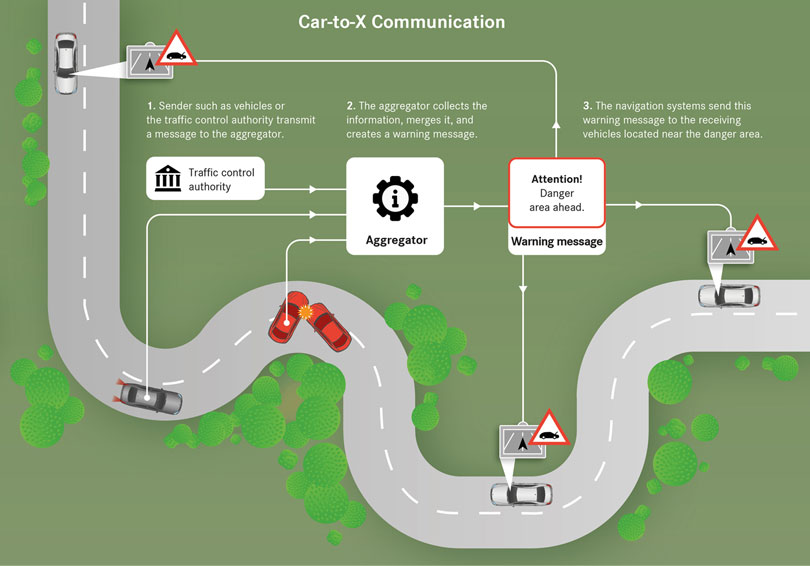
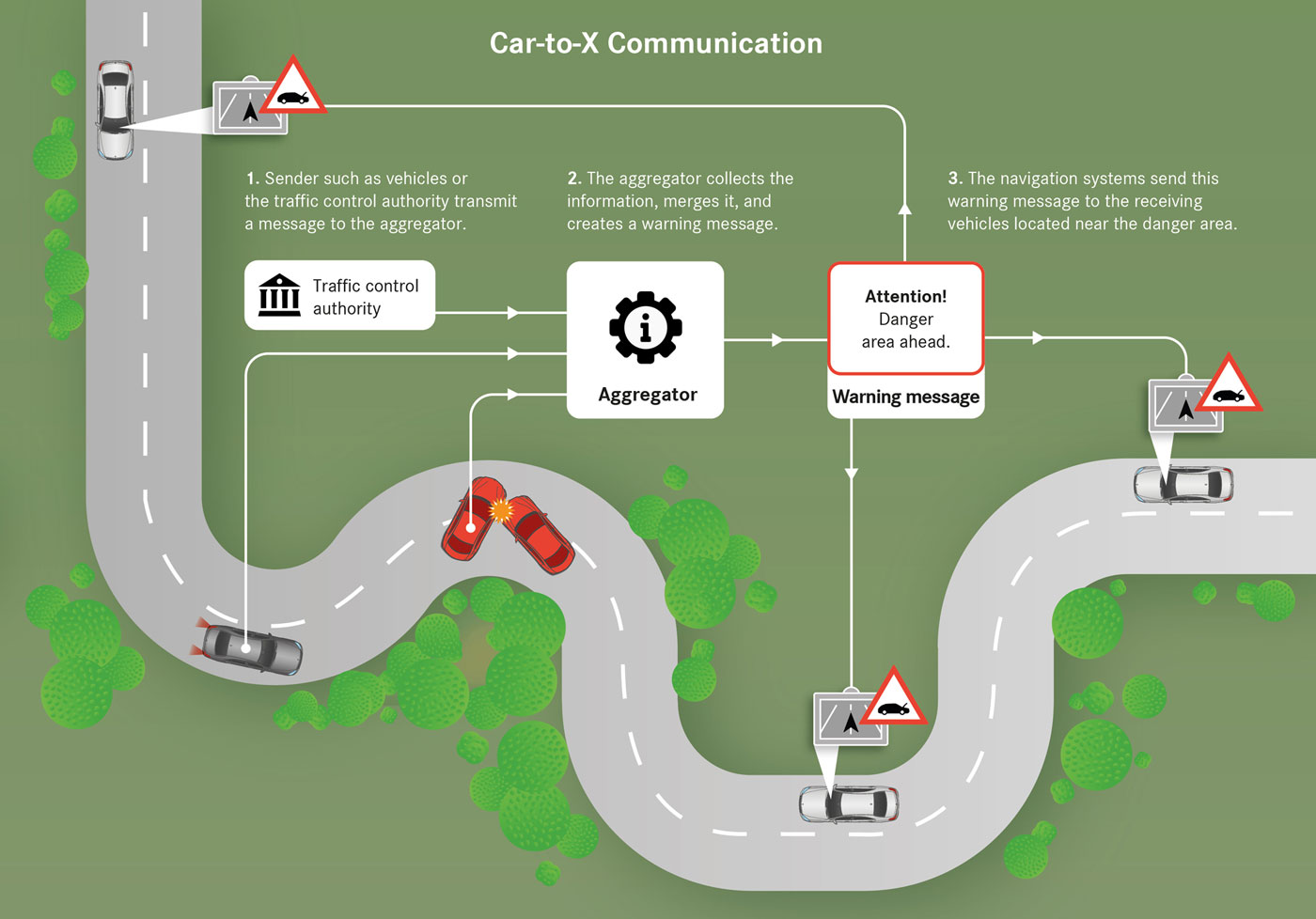
Scenario 1: The driver of a Mercedes-Benz vehicle activates the hazard warning system.
Scenario 2: The driver of a BMW sends out an emergency call ("eCall").
Scenario 3: A traffic management centre warns of a sudden hazard in the area, e.g. mobile roadworks.
The two Transmitter vehicles were positioned along a route from the city centre to the Evolution Congress Centre in Eindhoven. The "Receiver" vehicles – test vehicles by Mercedes-Benz, BMW and Ford – drove along this route to simulate following or oncoming traffic in a critical traffic situation. Immediately after the first impulse by the "Transmitters", the occupants of the Receiver vehicles received a message via their onboard systems.
The data are transferred on the following principle: each action initiates an impulse, and therefore a flow of data. A message is anonymised by the Transmitter – i.e. the vehicle or the traffic authority – and sent to a so-called "Aggregator", usually by mobile radio. This is the role of the experts in navigation systems, in this case Tom Tom and HERE.
Under real conditions the Aggregator collates the information and bundles it until a critical number of messages has been reached. The Aggregator then becomes a Service Creator and compiles a warning message. Via the navigation systems or the communication systems of the automobile manufacturers, this warning is then sent to the Receiver vehicles who are in the vicinity of the hazard. Thanks to the high market penetration of the navigation services involved, a large number of road users are therefore able to prepare for an acute traffic hazard.
Aims and limitations of the test: focus on data security
Over the coming twelve months, the project will e.g. focus on matters of data compatibility and cloud-based data processing. At first the companies taking part will use the currently installed communication technologies and file formats, and where necessary develop them further and harmonise them in the next stage. Cooperation between the project partners will start in the Netherlands, and is to be gradually extended to other EU countries.
Data security has top priority at all times in the project. During the period of the pilot project, the information will flow within a closed "eco-system" to which only the project partners have access. Daimler will only use the test fleet for the project - no customer data will be collected. Moreover, the Mercedes-Benz vehicles involved will send all their data in anonymised form: each message will only contain information about the incident and a time stamp. No reference is made to the Transmitter vehicle.
Background: Car-to-X technologies at Daimler
Daimler is contributing comprehensive experience with Car-to-X technologies to the cooperation project. In 2013, Mercedes-Benz was the first manufacturer in the world to introduce car-to-car communication to the roads in series production vehicles. Since 2016 Car-to-X communication modules have installed as standard – first in the E-Class, and now in all Mercedes-Benz vehicles with a navigation system.
Daimler has also been involved in research projects in this field for more than ten years: one of these was Germany's largest field trial of Car-to-X communication - "sim TD – Safe Intelligent Mobility – Test Field Germany". From 2008 to 2013, 500 participants covered more than 1.6 million kilometres to examine how intelligent communication systems can contribute to improving traffic safety and mobility. In this project Daimler already worked together with other automobile manufacturers and suppliers. The results confirmed that Car-to-X functions significantly improve safety while driving. Also that environmental harm can be avoided by more efficient use of traffic routes, and that networked, intelligent communication systems can decisively contribute to this.



